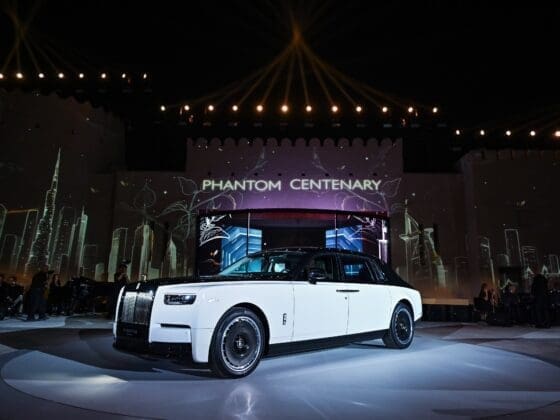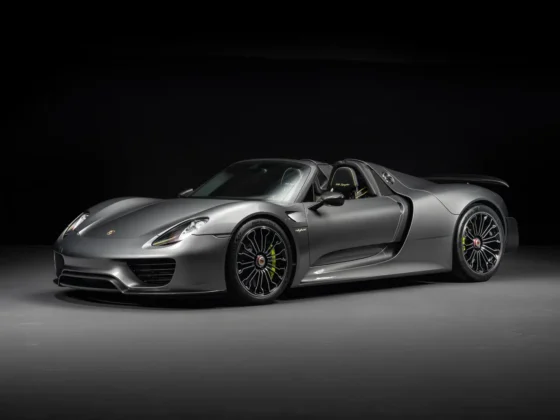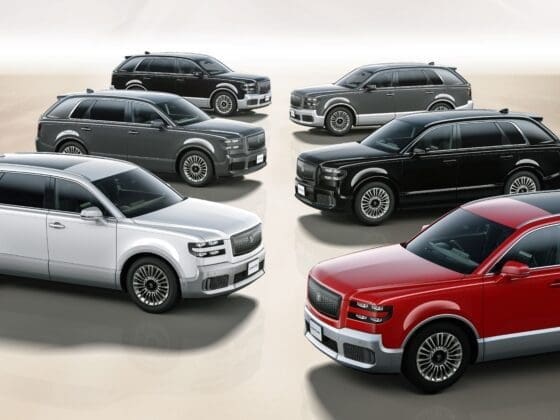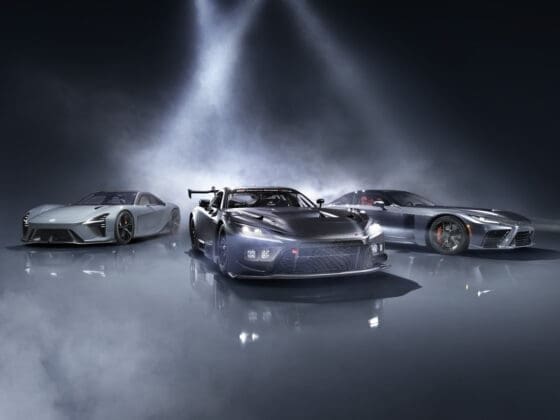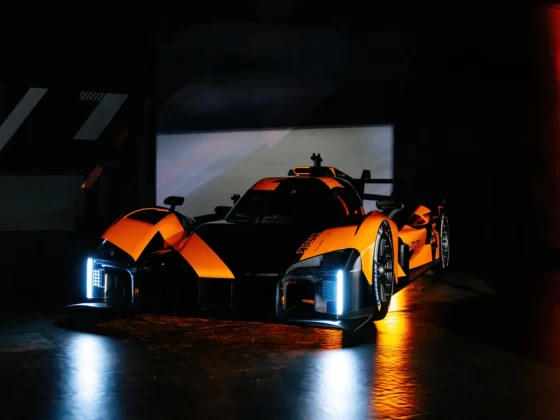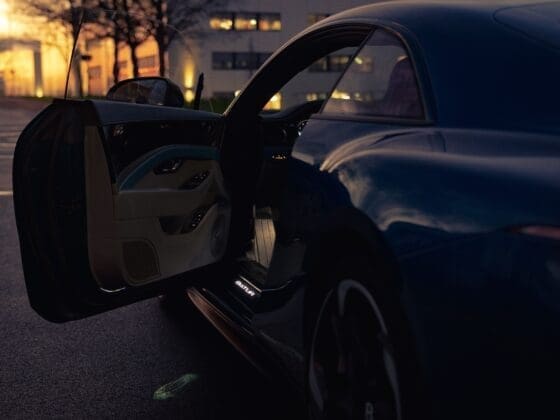The seventh generation of the Mercedes SL-Class returns to its performance heritage as an AMG only model range. Officially designated as the 2022 Mercedes-AMG SL, with the internal designation R232, two models are on offer – SL55 and SL63. Both models have V8 power under the hood but produce 476 and 585 horsepower, respectively.
The SL concept, conceived to reinvigorate the Mercedes brand through motor racing, came into existence with the 1952 300 SL (W194). In its very first year, the road-legal track car achieved, among other things, an impressive one-two victory in the 24 Hours of Le Mans. It then took an even more impressive first four places in the Nürburgring Grand Jubilee. The dominating performance of the SL badge on the race track led to the launch of the 300 SL production model (W198) in 1954, better known by its nickname, the “Gullwing.”
Seventy years since the SL badge made its impressive debut, “the new SL combines the sporty genes of the original SL with the driving performance typical of AMG. At the same time, it offers luxury and comfort at the absolute top level. This combination is unique in the sports car segment and is also reflected in the interior – where… the high-quality combination of the analogue world and state-of-the-art digital equipment makes it clear that the new SL is the rebirth of an icon for the modern era,” says Philipp Schiemer, Chairman of the Board of Management, Mercedes-AMG.
The exterior design language of the new SL gives subtle hints to its “Gullwing” heritage, for example, the two power bulges on the bonnet. The interplay of light and shadow makes the car’s overall appearance visually light and low. The 2022 model has a longer wheelbase, shorter overhangs, and a longer bonnet compared to its predecessor. The passenger compartment is set further back with a strongly raked windscreen. The wheel arches, voluminously sculpted to accommodate the large alloy wheels, add to the roadster’s dynamic appearance.
The folding hard-top roof has been replaced by a soft top, which not only gives the car a classic convertible look but also reduces the overall weight by some 20 kilograms, improves weight distribution, and lowers its centre of gravity. At the front, it sports the AMG-specific radiator grille, with 14 vertical slats. This is reminiscent of the 300 SL racing car of 1952. On either side of the grille are the slim, sharply outlined LED headlamps. The rear end is beautifully sculpted to appear fluid, and is infused with extremely slim LED rear lamps.
Beneath its skin, the new SL has a completely new architecture. Not a single component comes from the predecessor SL or any other model such as the AMG GT Roadster, we are informed. The chassis was designed to offer “the highest possible rigidity” while being lighter. It has a lightweight composite aluminium structure. The windscreen frame, made of steel, serves as roll-over protection in conjunction with the roll bar system behind the rear seats.
One of the focus areas of the new SL’s design was high aerodynamic efficiency. Specifically, a perfect balance between low drag and reduced lift. With “all streamlining elements seamlessly integrated into the exterior design,” the car’s drag coefficient is reported to be at 0.31. That is lower than the previous models and an excellent one for an open-top sports cars.

At market launch, the AMG 4.0-litre V8 biturbo engine will have two output levels. In the SL 63, the engine develops 430 kW (585 hp) and a maximum torque of 800 Nm over a wide rev range from 2500 to 4500 rpm. Acceleration from 0 to 100 kmph is reported to be 3.6 seconds, while the top speed is 315 kmph.
In the SL 55, the V8 unit develops 350 kW (476 hp) and a peak torque of 700 Nm. The sprint from standstill to 100 kmph takes 3.9 seconds, and the top speed is 295 kmph. AMG engineers achieved the increased output of the SL 63 primarily through higher boost pressure, greater airflow, and a “modified engine software.” At a later date, we are informed, AMG will also offer the SL as a performance hybrid as part of its E-Performance drive strategy.
For the first time in its 70-year history, the SL is equipped with AMG’s 4MATIC+ all-wheel-drive technology as standard. It is capable of delivering fully variable torque distribution to the front and rear axles. Sitting between the engine and wheels is AMG’s Speedshift MCT 9G transmission, adapted for the new SL. It offers shorter shift times and is more responsive to accelerator pedal commands, especially during spurts and load changes.
The SL 55 model is equipped, as standard, with a newly developed AMG Ride Control steel suspension. The SL 63, meanwhile, débuts AMG’s Active Ride Control suspension with active, hydraulic anti-roll stabilisation. Also, for the first time, a series-production AMG vehicle has been fitted with a multi-link axle, arranged entirely within the rim, in the front and rear. This system is designed to improve the car’s dynamics, precision, feedback and ride comfort. The new SL models will also feature AMG’s high-performance composite braking system for shorter braking distances, sensitive response and better stability.
The completely redesigned interior space of the new Mercedes-AMG SL, like its predecessors, combines a sporting aesthetic with luxury, but offers more room and functionality. It features a combination of analogue and digital elements, which the brand calls “hyperanalogue” – and is exemplified by the fully digital instrument cluster, which is integrated into a three-dimensional visor. The cockpit design as a whole, right down to the adjustable central display in the centre console, is focused on the driver. The rear seats offer more space than before.
Among the many highlights in the interior of the new SL is the sculptural seat design of the standard, electrically adjustable AMG sports seats. The head restraints, integrated into the backrest, come with the Airscarf system as standard. It brings warm air into the passenger compartment from air outlets in the head restraints and wraps around the head and neck area of the driver and front passenger like a scarf. AMG Performance seats are available as an option.
The second-generation MBUX system, which debuted in the new Mercedes-Benz S-Class, has been given SL and MAG specific content upgrades, such as “AMG Performance” or “AMG Track Pace” in the menu listings. There are six driving modes – Slippery, Comfort, Sport, Sport +, Race and Individual. The latter allows the driver to configure individualised driving experiences to match different driving conditions.
As with all AMG models, customisation options on the new SL is diverse, and ranges from sporty-dynamic to luxurious-elegant options. There are twelve body paint colours on offer, including the two exclusive SL paints – Hyper Blue metallic and Manufaktur Monza Grey magno. There are three roof colour variants. A range of aerodynamically optimised alloy wheels – which are designed to reduce drag through less turbulence – are available in diameters of 19, 20 or 21 inches.
It appears that the senior management team at Mercedes-Benz have decided to return the SL badge to the vaunted position it once held, as evidenced by the complete redesign of its exterior, interior, performance dynamics and the AMG only badging.
Commenting on what the SL badge means to the brand, Britta Seeger, Member of the carmaker’s Board of Management, said: “The SL is an icon: For almost 70 years, the distinctive sports car has delighted Mercedes customers of every generation around the world. With the rebirth of the roadster from Mercedes-AMG, the new SL more than ever remains the symbol of this timeless fascination.”









